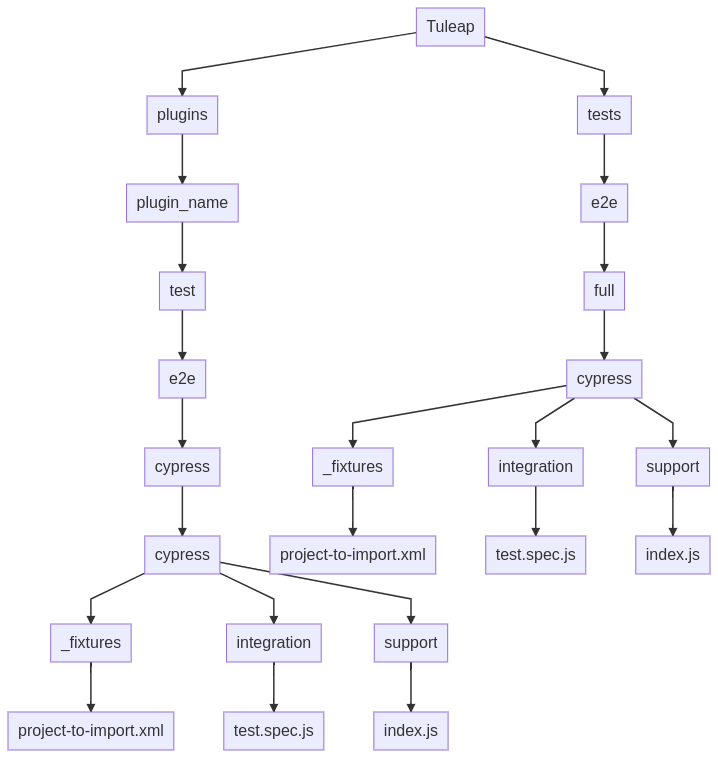End to end tests¶
Cypress tests¶
All end-to-end tests are written with Cypress.
Writing good tests¶
Cypress tests come in addition to manual tests defined in our TestManagement tool. The major advantage of cypress is that tests are run every night and warn us quickly if something bad happens.
- One of the main difficulties in our end-to-end workflow is having a relevant test suite:
Tests covered by Cypress should not aim to eliminate TestManagement test definitions. That means that when we are working on a subject, before starting to write any code, we must think about what test we want to cover and who will execute the test (is the feature for everybody, for project admin …). Once it’s done, we can check if we have differences with our TestManagement test suite and adapt the TestManagement suite with what has been identified.
When we add new tests in Cypress that don’t exist in TestManagement, we must add them as a new TestManagement definition.
- When TestManagement test definitions can’t fully be covered by Cypress, then we should split them:
one part covered by Cypress
one part which will be done manually during validation
Best practises for writing tests¶
It’s better to have tests split by user roles.
Test should be executed by the least-powered user (don’t use project administrator for everything).
Multiple
describeand smallitwill help us debug what’s going on when tests fail.Multiple TestManagement test definitions can not be covered by a simple testdefinition (
ttmtool won’t do the report automatically). In that case you should split your Cypress test and link each TestManagement test definition to a smallerit.Always put your Cypress tests in the relevant plugin. End-to-end tests should still respect the plugin architecture.
Write tests¶
If you want to run all cypress tests locally just launch:
$> make tests_cypress
You will be able to see the results of the test execution in tuleap/test_results_e2e_full.
If you want to add new tests, you should use the cypress dev image:
$> make tests_cypress_dev
It will launch a local container with a bunch of projects (defined in tests/e2e/_fixtures).
Once the container has started, you must be able to launch the Cypress electron app.
The test structure respects the Tuleap distinction between core and plugins.
To write tests in core, just go on core namespace and run npx cypress open
$> cd tests/e2e/full/
$> npx cypress open
To write tests in plugins, just go on plugin namespace and run npx cypress open
$> cd plugins/<plugin_name/tests/e2e/cypress/
$> npx cypress open
As a reminder, an architecture schema is available:

The electron app will launch tests on https://tuleap/.
You have to add a new entry in /etc/hosts file, the IP should correspond to the IP of your container tuleap_runtests_backend-web-e2e.
$> sudo vi /etc/hosts
$> 172.19.0.3 tuleap
Note
The electron app will be able to run only when container is fully monted. If https://tuleap/ is unreachable make sure that container initialisation has finished. If it does not solve your issue, verify the IP in your /etc/hosts
Automated tests¶
Some of our validation tests are executed by the CI. To declare a test as automated, you have to:
On you dev platform
Checkout the patch introducing the new tests
make tests_cypress
in
test_results_e2e_fulllook for theresult<sha1>.xmlcorresponding to the tests you are automating
In TTM open the test Validation Execution tracker
Open the artifact(s) correponding to the test you have automated
You should find a field
Automated testsEnter the
testcasename into this fieldIn the field
Refactoringchoose the value moved to cypress (in order to be able to see which tests must be run by the CI)